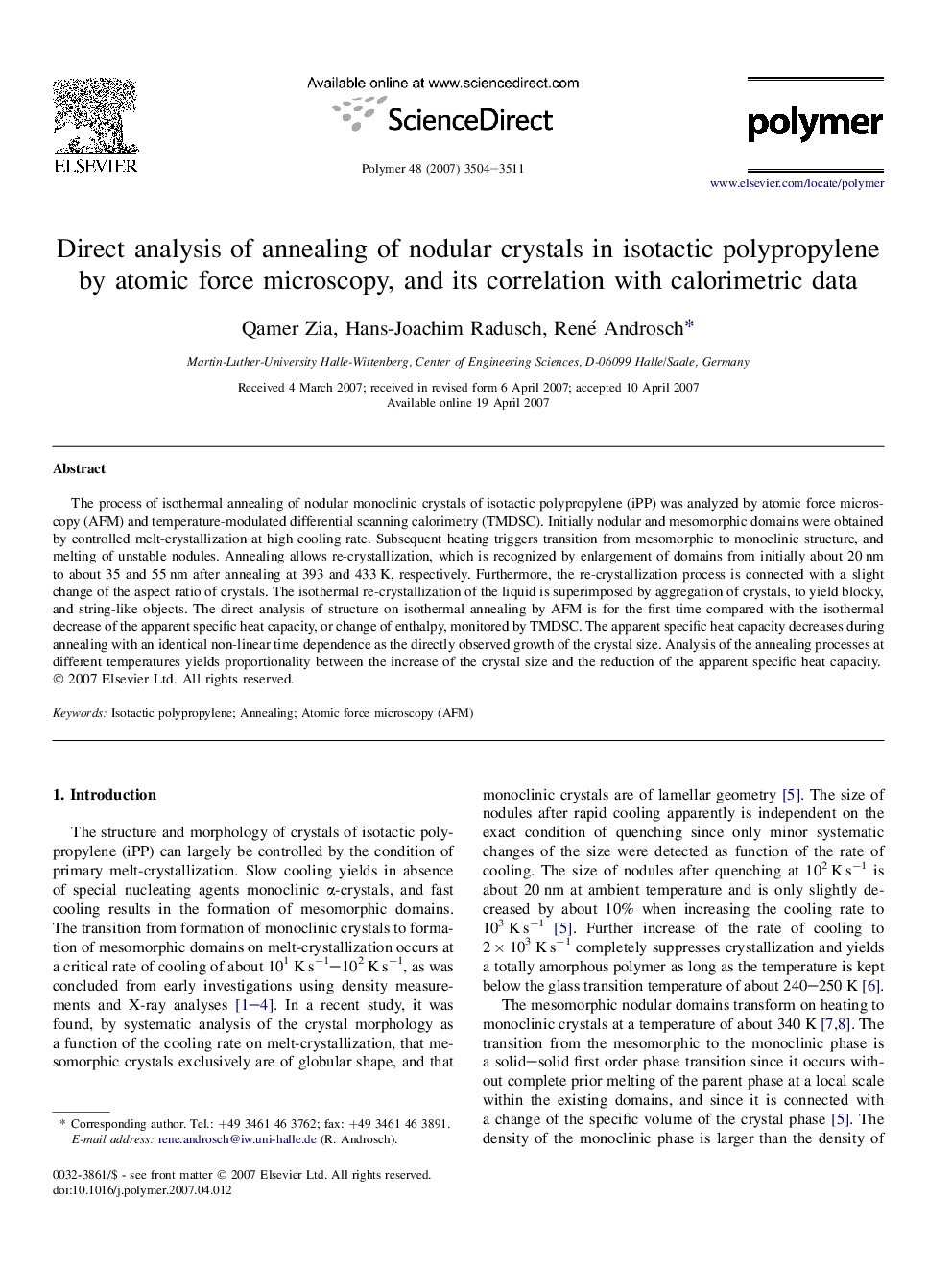| Article ID | Journal | Published Year | Pages | File Type |
|---|---|---|---|---|
| 5190157 | Polymer | 2007 | 8 Pages |
Abstract
The process of isothermal annealing of nodular monoclinic crystals of isotactic polypropylene (iPP) was analyzed by atomic force microscopy (AFM) and temperature-modulated differential scanning calorimetry (TMDSC). Initially nodular and mesomorphic domains were obtained by controlled melt-crystallization at high cooling rate. Subsequent heating triggers transition from mesomorphic to monoclinic structure, and melting of unstable nodules. Annealing allows re-crystallization, which is recognized by enlargement of domains from initially about 20Â nm to about 35 and 55Â nm after annealing at 393 and 433Â K, respectively. Furthermore, the re-crystallization process is connected with a slight change of the aspect ratio of crystals. The isothermal re-crystallization of the liquid is superimposed by aggregation of crystals, to yield blocky, and string-like objects. The direct analysis of structure on isothermal annealing by AFM is for the first time compared with the isothermal decrease of the apparent specific heat capacity, or change of enthalpy, monitored by TMDSC. The apparent specific heat capacity decreases during annealing with an identical non-linear time dependence as the directly observed growth of the crystal size. Analysis of the annealing processes at different temperatures yields proportionality between the increase of the crystal size and the reduction of the apparent specific heat capacity.
Related Topics
Physical Sciences and Engineering
Chemistry
Organic Chemistry
Authors
Qamer Zia, Hans-Joachim Radusch, René Androsch,
